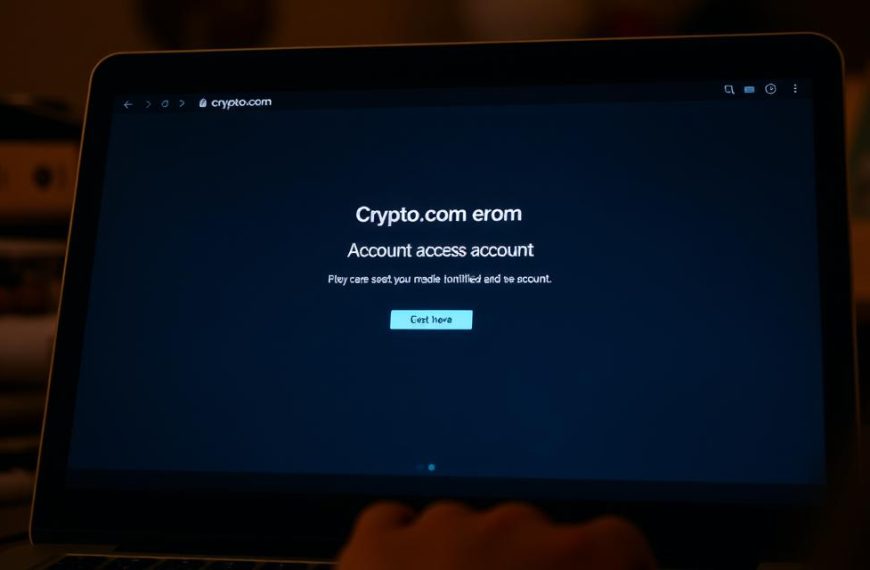XRP is a digital asset created by Ripple, a fintech company founded in 2012. It serves as a bridge currency in global payment systems, enabling fast and low-cost cross-border transactions. Unlike other cryptocurrencies, XRP focuses on institutional use, making it an attractive solution for financial institutions.
XRP’s key value proposition lies in its ability to eliminate the need for pre-funded nostro accounts, facilitating international money transfers efficiently. As one of the major cryptocurrencies by market capitalization, XRP continues to face regulatory challenges that impact its adoption and price performance. This article aims to provide a comprehensive understanding of XRP, its workings, and its potential role in the future of global finance.
What Is XRP Crypto and How Did It Begin?
XRP’s origin story is deeply connected to Ripple’s goal of establishing a network that enables fast and secure transactions. Ripple, the company behind XRP, aims to revolutionize the global payment system by providing a more efficient infrastructure.
The Origin Story of Ripple and XRP
Ripple was founded with the vision of creating a more efficient global payment system that could process transactions in seconds rather than days. The company’s founders identified the inefficiencies in cross-border payments and remittance systems as a key problem that needed to be addressed. XRP was designed to serve as a bridge currency that could facilitate value transfer between different fiat currencies.
The Vision Behind XRP’s Creation
The vision behind XRP’s creation was to provide a fast, reliable, and cost-effective solution for financial institutions. Ripple promotes the concept of the “Internet of Value,” which suggests that money should move as quickly and easily as information does today. By partnering with financial institutions rather than trying to replace them, Ripple aims to become an alternative to traditional financial messaging systems like SWIFT.
XRP vs. Traditional Cryptocurrencies: Key Differences
The Ripple network, which powers XRP, differs significantly from other cryptocurrency networks. One of the primary distinctions lies in its technological approach.
Centralization and Corporate Structure
Unlike many cryptocurrencies that pride themselves on decentralization, XRP’s network is maintained by a network of validating servers. These servers are run by various entities, including banks and financial institutions, which contributes to the network’s stability and security.
The corporate structure behind XRP is another differentiator. Ripple Labs, the company behind XRP, plays a significant role in the development and maintenance of the XRP Ledger.
Transaction Validation Without Mining
XRP’s transaction validation process is distinct from that of traditional cryptocurrencies like Bitcoin. Instead of relying on mining to validate transactions, XRP uses a consensus mechanism known as HashTree.
- The XRP Ledger uses a network of validators that reach consensus through voting.
- This mechanism allows XRP to process transactions in seconds.
- XRP’s validation process is more energy-efficient compared to the high electricity consumption of Bitcoin mining.
- All XRP tokens were created at launch, with no new coins being generated over time.
The absence of mining and the use of a consensus mechanism enable XRP to achieve a high throughput of 1,500 transactions per second, significantly outperforming Bitcoin’s 7 TPS.
How the Ripple Network Functions
Understanding how the Ripple network functions is crucial to appreciating the advantages of XRP in global payments. The Ripple network is built around a unique consensus protocol that enables fast and secure transaction processing.
The Consensus Protocol Explained
The Ripple network uses a consensus mechanism that validates transactions without the need for mining. This consensus protocol is based on a network of trusted nodes that agree on the state of the ledger, ensuring that transactions are processed quickly and securely. The XRP Ledger is designed to be highly resilient and fault-tolerant, making it suitable for a wide range of financial applications.
Transaction Speed and Scalability
One of the key advantages of the Ripple network is its ability to process transactions at high speeds. The XRP Ledger can confirm transactions in less than 4 seconds, significantly outperforming many other cryptocurrencies. It can handle approximately 1,500 transactions per second, making it a viable solution for real-time payment applications.
| Cryptocurrency | Transaction Finality Time | Transactions Per Second |
|---|---|---|
| XRP | 3-5 seconds | 1,500 |
| Bitcoin | 10-60 minutes | 8 |
| Ethereum | Several minutes | Varies |
The XRP Ledger’s design minimizes the computational resources required for transaction validation, making it a scalable solution for financial institutions. With its high transaction speed and scalability, XRP is particularly suitable for institutional use cases requiring high reliability.
XRP’s Role in Global Payment Systems
Ripple’s XRP plays a crucial role in enhancing the efficiency of cross-border transactions. By leveraging blockchain technology, XRP facilitates fast and cost-effective payments across the globe.
Cross-Border Transactions and Remittances
XRP is particularly beneficial for remittances and small business payments, which are typically characterized by low value and high volume. The largest remittance corridor, between the U.S. and Mexico, sees nearly $36 billion in transactions annually. Mexico’s largest cryptocurrency exchange is already processing approximately 10% of these remittances using XRP through Ripple’s On-Demand Liquidity product.
On-Demand Liquidity Solution
Ripple’s On-Demand Liquidity (ODL) solution utilizes XRP as a bridge currency for cross-border payments, allowing for instant settlement. The process involves converting the sender’s currency to XRP, transferring it across the XRP Ledger, and then converting it to the recipient’s currency. This eliminates the need for pre-funded nostro accounts, freeing up capital for financial institutions. By increasing liquidity, ODL enables more productive use of capital, particularly in corridors with low liquidity or volatile currencies.
The ODL solution has the potential to significantly reduce costs compared to traditional correspondent banking. By leveraging local cryptocurrency exchanges as on/off ramps, ODL provides a seamless and efficient transaction process. As a result, XRP is poised to play a vital role in the future of global payment systems, enhancing transaction efficiency and reducing costs for financial institutions worldwide.
Ripple’s Relationship with Financial Institutions
Ripple’s collaboration with banks and other financial entities is redefining the way international transactions are conducted. By leveraging its innovative blockchain technology, Ripple is creating a more efficient and transparent payment system.
Banking Partnerships and Integration
Ripple has established partnerships with numerous financial institutions worldwide, enabling them to utilize its On-Demand Liquidity solution for cross-border transactions. This integration allows banks to reduce costs and improve the speed of international payments. Some key benefits include:
- Enhanced transaction speed and transparency
- Reduced costs through minimized intermediary fees
- Increased efficiency in global payment processing
The SWIFT Alternative
Ripple positions itself as a modern alternative to the traditional SWIFT messaging network for international banking. While SWIFT has dominated cross-border payments for decades, it suffers from slow settlement times and high costs. Ripple’s network offers a more efficient and cost-effective solution, addressing key pain points such as:
- Settlement delays and lack of transparency
- High failure rates and costly intermediary fees
- Limited scalability and flexibility
By providing a blockchain-based alternative, Ripple is challenging the traditional financial infrastructure and offering a more efficient way to conduct international transactions.
Advantages and Challenges of Using XRP
The utilization of XRP in global payments presents both opportunities and obstacles that shape its future in the financial landscape. As a significant player in the cryptocurrency market, Ripple’s XRP has garnered attention for its potential to transform cross-border transactions.
Benefits: Speed, Cost, and Efficiency
XRP offers several benefits, including fast transaction times and low costs, making it an attractive option for global payments. The crypto currency’s efficiency is largely due to its ability to process transactions in a matter of seconds, outpacing traditional payment systems. This speed, combined with its low transaction fees, positions XRP as a viable alternative for remittances and other cross-border transactions.
Challenges: Regulatory Issues and Adoption Barriers
Despite its advantages, XRP faces significant challenges, particularly regulatory issues stemming from the Securities Exchange Commission‘s allegations that XRP is an unregistered security. This regulatory uncertainty has impacted XRP’s market adoption, led to fluctuations in its price, and created barriers for financial institutions considering its use. The outcome of the SEC lawsuit will be crucial in determining XRP’s future as a currency and its role in the global financial ecosystem.
The SEC Lawsuit and Regulatory Landscape
The ongoing lawsuit between Ripple and the SEC has significant implications for XRP’s future. Since 2015, Ripple has faced several legal challenges in the United States, with the most significant being the SEC’s complaint filed on December 22, 2020, alleging that Ripple and its executives violated investor protection laws by selling XRP as an unregistered security.
Understanding the Securities Exchange Commission Case
The SEC’s case against Ripple centers on whether XRP is a security or a commodity. This distinction is crucial as it determines the regulatory framework that applies to XRP. The outcome of this case could set a precedent for how other cryptocurrencies are classified and regulated. The SEC argues that XRP is a security, subject to SEC registration requirements, while Ripple contends that XRP is a commodity, not subject to the same regulations.
Potential Implications for XRP’s Future
The implications of the SEC lawsuit are far-reaching. A favorable ruling for Ripple could lead to XRP being relisted on major exchanges, potentially appreciating its price. Conversely, an unfavorable ruling could impact Ripple’s business model and XRP’s utility in cross-border payments. Regulatory clarity, regardless of the outcome, could benefit XRP and the broader crypto industry in the long term. The case also highlights the complex compliance landscape for cryptocurrencies globally.
- A favorable ruling for Ripple could lead to increased adoption and price appreciation for XRP.
- An unfavorable ruling could negatively impact Ripple’s business model and XRP’s utility.
- The case could establish important precedents for the classification of other cryptocurrencies.
Conclusion: The Future of XRP in the Global Financial Ecosystem
As the financial world becomes increasingly digital, XRP’s role in shaping the future of cross-border transactions cannot be overstated. Designed specifically for institutional use, XRP offers a unique solution for efficient and cost-effective global payments. The potential long-term impact of XRP on global payment systems is significant, with widespread adoption potentially transforming the way financial institutions conduct transactions.
The outcome of ongoing regulatory challenges will play a crucial role in determining XRP’s future trajectory. Despite these challenges, Ripple’s ecosystem continues to innovate, exploring new use cases beyond cross-border payments. As the world moves towards digital transformation in banking and financial services, XRP is poised to be at the forefront, representing a bridge between traditional finance and the cryptocurrency ecosystem.














